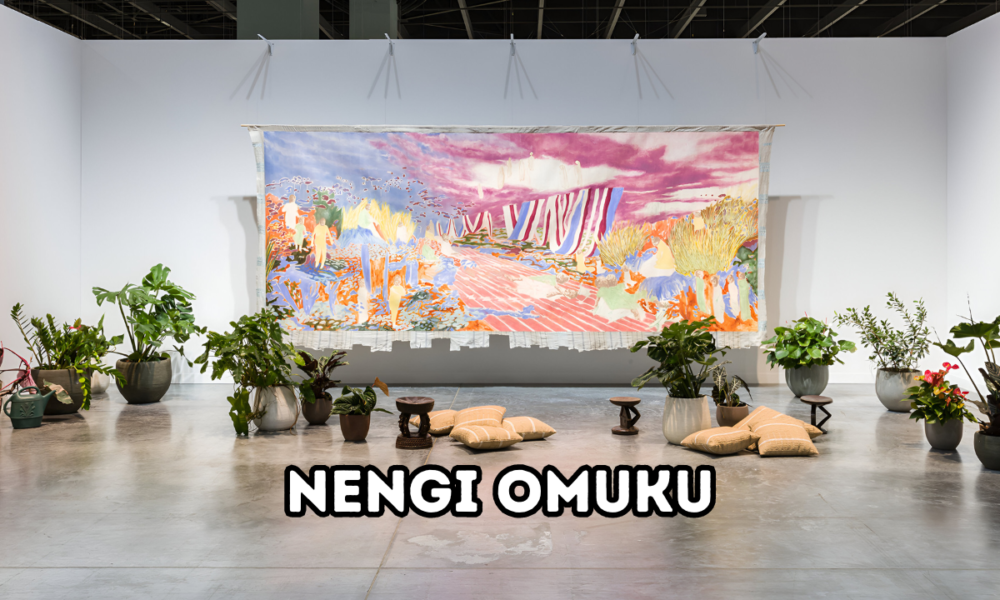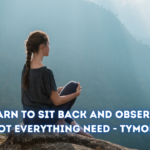Traditional Textiles in Contemporary Art with Nengi Omuku’s Sanyan Cloth
Contemporary artist Nengi Omuku combines traditional sanyan cloths and oil paintings to create her work. The sanyan fabric forms the surface for her multimedia paintings, which include The Lighthouse, Reclining Figures, and Kwadwo I. Her art pays homage to her Nigerian culture and personal history, depicting abstract figures and celestial and domestic landscapes.
Sanyan Fabric
Sanyan is a traditional West Nigerian fabric made of woven moth silk combined with industrial cotton. It is a dress fabric used in drapery clothing. As a handspun, precolonial material, sanyan has helped form Nigeria’s cultural history. In more recent production, sanyan often only uses cotton instead of silk or silk blend. Omuku uses vintage sanyan in her work.
After receiving her master’s from the Slade School of Fine Art in London and returning to her home country of Nigeria, Omuku began investigating traditional textiles. She traveled between the different states and asked people to show her traditional materials. Omuku describes her introduction to sanyan as a “deeply spiritual experience,” saying, “Sanyan stuck with me because it speaks so loudly about a rich precolonial past in Western Nigeria. It is a vessel of our heritage and an immense source of pride for me as a Nigerian artist, to be able to work collaboratively with this fabric.”
Creation Process
When creating a painting, Omuku sews sanyan strips together, often combining strips with similar patterns to create a composite piece. These strips are treated with gesso. After arranging the material, she paints with oil on the reverse side. This is done to respect the fabric’s creator and preserve their artistry. Painting on the opposite side also maintains the symbolic motifs woven into the fabric, representing prayers.
Omuku photographs and paints sitters in her studio to use for her work. She also draws on images from both archival and contemporary Nigerian press and media, or other times, figures from her imagination. After selecting her image, she focuses on creating a collage for the space. This helps her decide what direction the painting should go.
By incorporating sanyan into her work, Omuku changed her style and color palette. Sanyan is a rougher material, so she uses looser brushstrokes when painting on it. While she initially used vibrant colors in her works, she gradually changed to more muted tones to better match the fabric’s base khaki beige. While painting, the fabric’s color informs her palette choices to create, in her words, a “harmonious experience.”
Paintings and Themes
In contemporary tradition, Omuku’s work often focuses on psychological spaces. The figures in Omuku’s paintings do not have distinctive facial features, erasing them to explore the expression of the mind. She also experiments with depicting the body as a reflection of the internal experience. Her paintings are dreamlike, playing with the line between figurative and abstract.
Drawing upon her experience of being raised as a florist and horticulturist, Omuku expresses the theme of reconnecting with nature in her work. Her work also explores subjects such as community and family groups. The contradiction inspired by the use of ambiguous figures within these groups suggests both the desire to belong and a dislocation from society or identity. Her paintings also respond to civic unrest in Lagos.
Sanyan and Nengi Omuku
Nengi Omuku creates a conversation using sanyan strips as a medium. Her painting style includes features of Romanticism, creating tension between the use of a British style and traditional Nigerian material. This forms a reference to the history of British Imperialism in Nigeria. The difference between the tightly woven and carefully made materials and the smooth oil paint reflects the concept of moving between cultures while being tied to a homeland. Omuku’s inaugural solo New York show begins in September 2024.







